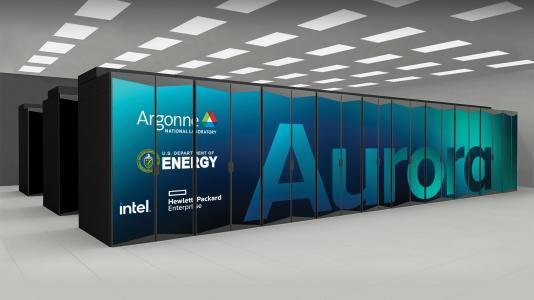Argonne National Laboratory has unveiled “Aurora,” one of the most powerful supercomputers in the world, poised to revolutionize scientific research and tackle some of the most complex challenges facing society today. As reported by FOX 32 Chicago, this cutting-edge machine will accelerate breakthroughs across a wide range of fields, from climate modeling and advanced materials to healthcare and energy solutions. With Aurora’s unprecedented computational capabilities, researchers are set to unlock new insights that could transform industries and improve lives worldwide.
Aurora Supercomputer Set to Revolutionize Scientific Research at Argonne National Laboratory
Argonne National Laboratory is preparing to usher in a new era of scientific discovery with its latest technological marvel: the Aurora supercomputer. Designed to deliver unprecedented processing power, Aurora is expected to accelerate research across multiple fields, from climate modeling and high-energy physics to drug discovery and artificial intelligence. Leveraging cutting-edge hardware, including advanced CPUs and GPUs, the system will operate at exascale speeds-performing over one quintillion calculations per second-making it one of the most powerful supercomputers in the world.
The capabilities of Aurora are poised to transform the scientific landscape by enabling researchers to tackle previously insurmountable challenges. Key attributes include:
- Exascale performance: Breaking new ground in computational speed and efficiency.
- Enhanced AI integration: Accelerating machine learning and data analysis.
- Energy efficiency: Employing innovative cooling and power-saving technologies.
- Multi-disciplinary applications: Supporting diverse research from quantum mechanics to epidemiology.
| Feature | Impact | Timeline |
|---|---|---|
| Exascale Computing | Unlocks complex simulations | Q4 2024 |
| AI Optimization | Faster data processing | Q1 2025 |
| Power Efficiency | Reduces operational costs | Ongoing |
Harnessing Unprecedented Computing Power to Tackle Climate Change and Disease
Designed to push the boundaries of scientific research, Aurora represents a leap forward in computational capability. This state-of-the-art supercomputer, housed at Argonne National Laboratory, is engineered to process vast amounts of data at unprecedented speeds, enabling breakthroughs in critical areas like climate modeling and disease research. With its advanced architecture, Aurora can simulate complex environmental patterns, helping scientists predict and mitigate the effects of climate change with greater accuracy and urgency than ever before.
Beyond environmental science, Aurora’s immense processing power is set to revolutionize the medical field by accelerating drug discovery and decoding the mysteries of various diseases. Key features that make this possible include:
- Quantum-inspired algorithms for enhanced data analysis
- Real-time simulations for epidemic modeling and containment strategies
- Massive parallel processing to analyze genetic and molecular data
| Application Area | Expected Impact | Projected Timeline |
|---|---|---|
| Climate Modeling | More accurate predictions of extreme weather events | 1-3 years |
| Disease Research | Faster identification of treatment targets | 2-4 years |
| Energy Efficiency | Optimized renewable energy systems | 3-5 years |
Experts Recommend Expanding Access to Aurora for Collaborative Innovation and Breakthrough Discoveries
Leading scientists and technology experts from Argonne National Laboratory emphasize the critical need to broaden the user base of Aurora, the cutting-edge supercomputer designed to tackle some of the most complex scientific challenges of our time. By increasing access, researchers from diverse fields-including climate modeling, drug discovery, and material science-can leverage its unprecedented computational power to accelerate innovation and drive breakthrough discoveries at an unmatched scale and speed. Collaboration across disciplines is seen as key to unlocking the full potential of Aurora’s capabilities, enabling a new era of high-impact research that transcends traditional boundaries.
Experts point out several priorities to facilitate this expanded access:
- Inclusive application processes: Simplifying proposals to encourage participation from smaller institutions and emerging researchers.
- Enhanced support services: Providing user training and dedicated technical assistance to maximize effective utilization of Aurora’s advanced architecture.
- Cross-sector partnerships: Engaging industry, academia, and government agencies to foster a vibrant, collaborative ecosystem around Aurora.
| Area of Impact | Potential Outcomes |
|---|---|
| Climate Science | More accurate predictive models |
| Pharmaceutical Research | Faster drug candidate identification |
| Materials Engineering | Discovery of novel substances |
Final Thoughts
As Aurora prepares to come online at Argonne National Laboratory, the scientific community eagerly anticipates the breakthroughs this next-generation supercomputer will enable. With its unprecedented power and advanced capabilities, Aurora is set to accelerate research across fields from climate modeling to drug discovery, tackling some of the most complex challenges facing science today. Its deployment marks a significant milestone in high-performance computing, promising to reshape the landscape of innovation and discovery in the years ahead.
